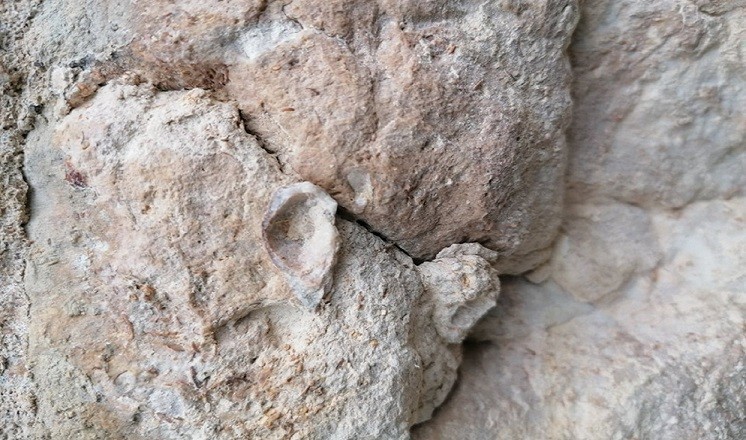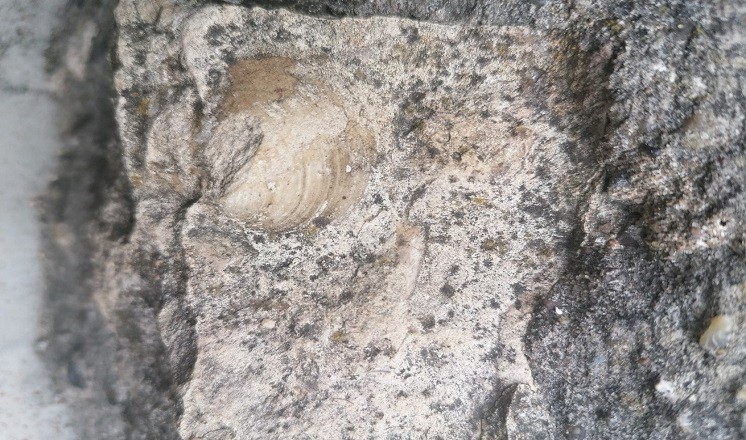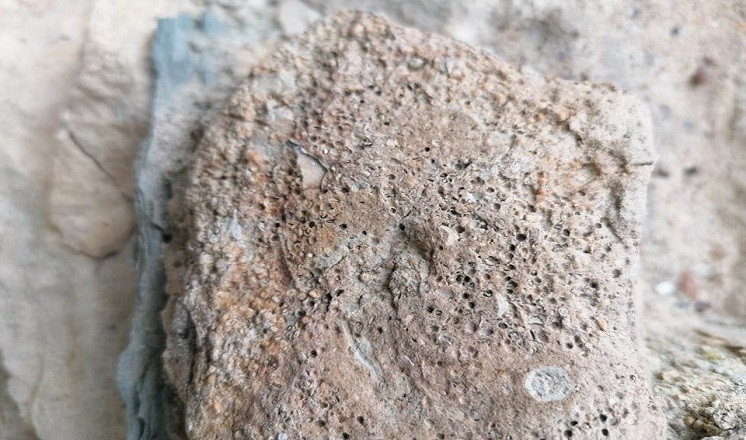The Prehistoric Castle
RSS FeedThis blog has been written by Rachel Jones who has been volunteering with us through lockdown. Rachel is a recent geology graduate who has also trained in journalism and is passionate about scientific communication. She has been working with us to research and develop social media content on the themes of geology and prehistory in Lincolnshire.
There are places in Lincoln where you can walk through time; where you can go far beyond kings, queens and bishops, back to when dinosaurs roamed the Earth.
The old buildings that make up the bulk of Lincoln’s historic quarters were built using rocks taken from the local area, including limestone and sandstone. This gives us a great opportunity to glimpse the geological history of the local area without having to travel to a quarry or cliff face.
Among the best examples of this are the castle walls. These were built by the Normans in 1068 to subdue local resistance following their invasion. The Normans used limestone from Lincolnshire itself, often from the same quarries that the Romans had used. By taking a walk along the walls, it's possible to glimpse the paleoenvironment of Lincolnshire. The limestone that was taken from these local quarries belongs to the Lincolnshire Limestone Formation, a geological formation that has been dated to the mid-Jurassic period around 165 million years ago.
If you look carefully at the bricks of the castle walls you can spot shell fragments. These shells are likely to have come from creatures such as brachiopods, gastropods and oysters. The presence of these small creatures indicates that they lived in a shallow marine environment such as a lagoon or beach. You can see this today where you find snails and bivalves along the beach and in rock pools.
Some bricks also show an abundance of shells, which means animal life thrived at times in this locality during the Jurassic period. However, the visible animal life is dominated by a selection of small creatures. This could mean the environment at the time was anoxic, meaning there wasn’t enough oxygen for larger creatures to thrive; or it may have been that vegetation was sparse, and only small mollusks and microscopic creatures called micro fauna could make a living on this stretch of sea floor. These may have been a result of the marine waters being more stagnant than usual, meaning they could not be well oxygenated.
One final feature present in the castle walls that can help in figuring out our local geology are the ooids that are visible in the bricks. They are small, round and plentiful. They also look a little like fish eggs. They are only a few millimeters across and are made up of calcium carbonate. Ooids are formed when calcium carbonate is deposited on the sea floor and accumulates around a small fragment, such as a piece of shell or a grain of sand. The presence of these ooids in the castle walls show the limestone was deposited in a warm environment. This is because the solubility of calcium carbonate decreases as temperatures rise, meaning more of this mineral can be crystallised into an ooid. Another thing this feature shows us is that the limestone was deposited not just in a shallow lagoon, but in an area with continuous current such as near an estuary, high tidal zone or some other part of the coast with a lot of current energy. It is obvious due to the spherical nature of the ooids that they have been continuously rolled around by waves.
Although the castle walls may not show the correct sequence of deposition, in the way that a quarry or cliff face would give us an accurate idea of how the paleoenvironment changed over time, they do give us a great opportunity to glimpse the fascinating history of our county that’s normally hidden beneath the ground.
Comments
This is so interesting! I used to live in Lincoln and I visited the castle many times and I never knew any of this! Thank you Rachel for such an informative article.
Gilly boutin


